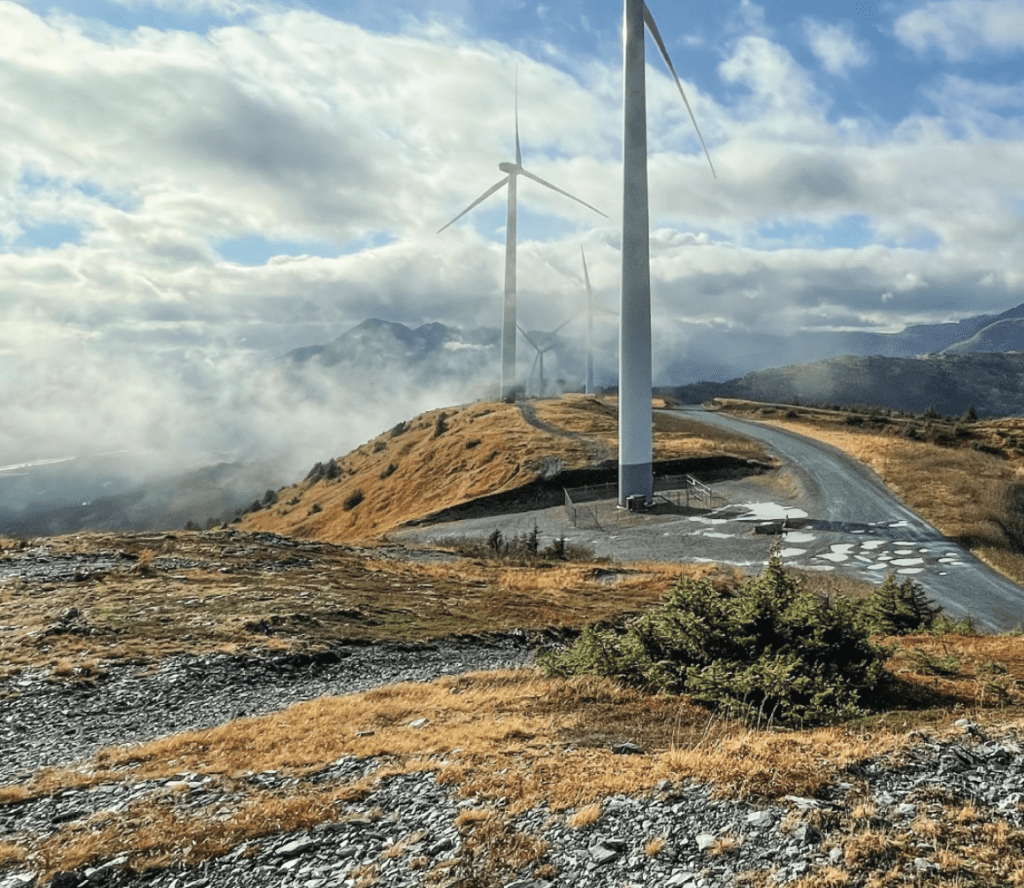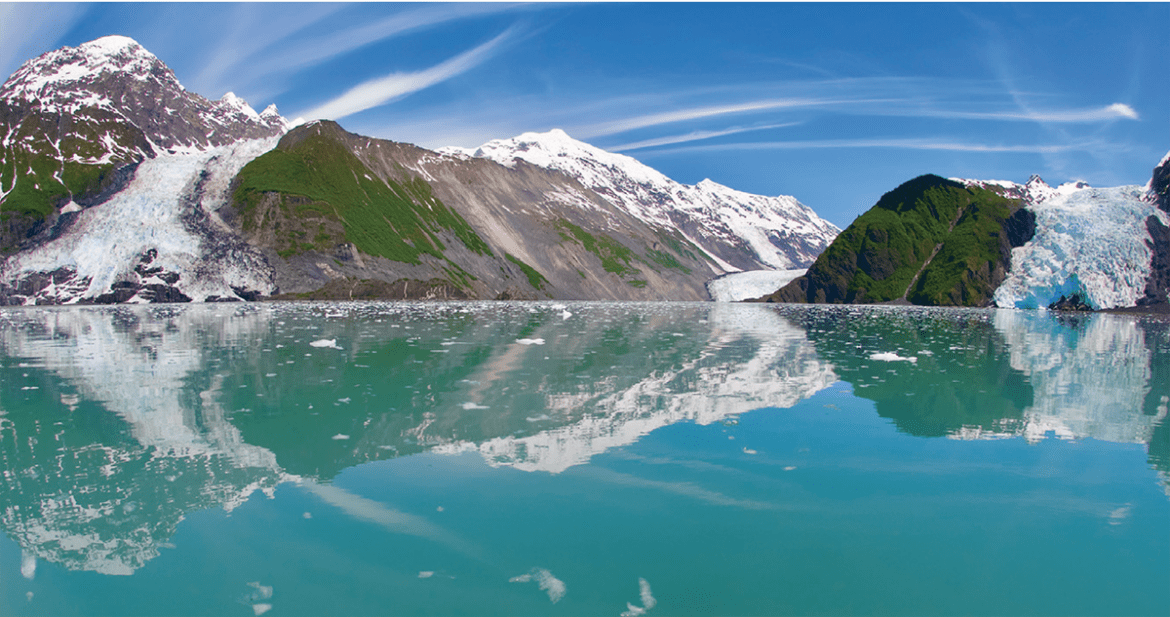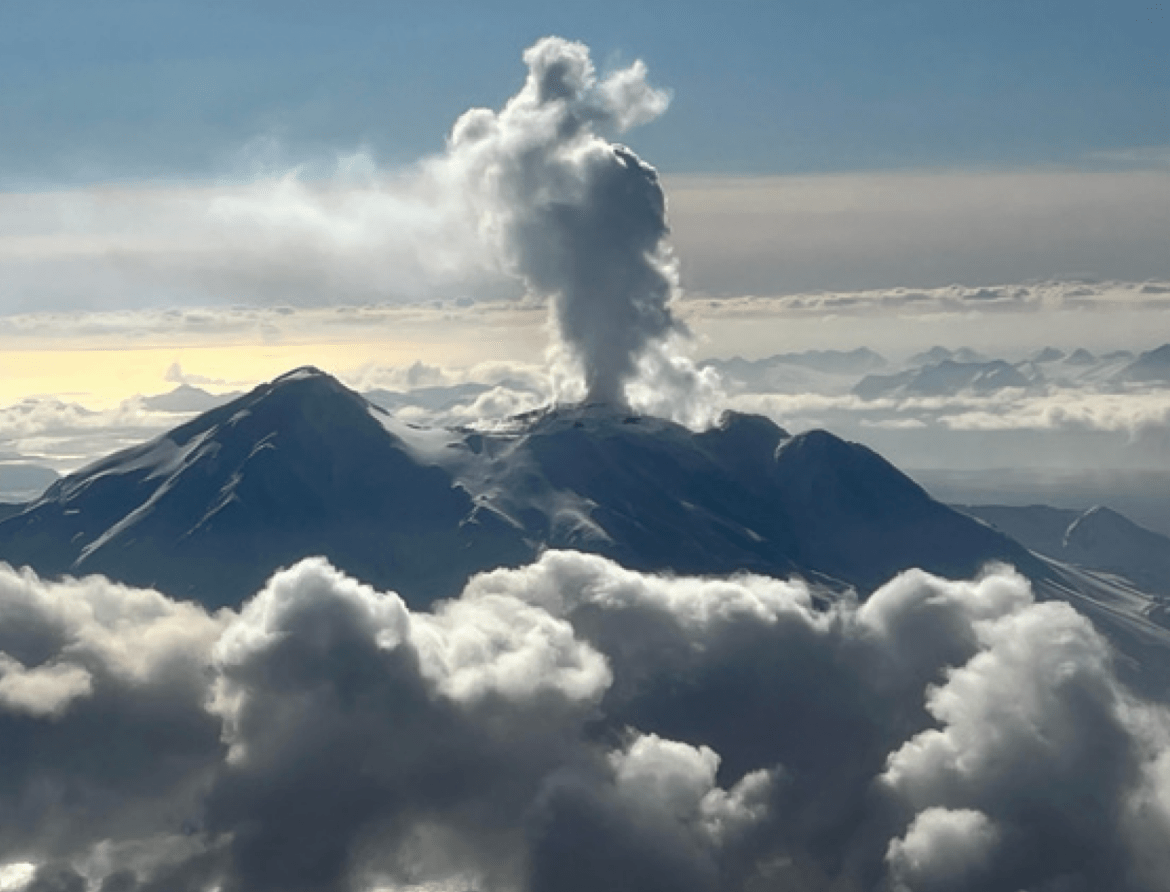Looking for a new April adventure? Consider heading up toward Tahneta Pass on the Glenn Highway to join this year’s annual Gunsight Mountain hawk watch. The main event is April 19-20 and features talks by pro birders, hawk counts, and a potluck barbecue. Last year, says Mr. Whitekeys of Anchorage Audubon, observers counted over 250 raptors in one day, although thousands of hawks transit the area each spring. “This is a spectacular event,” says Whitekeys. “It’s an almost eight-week parade of hawks.” Whitekeys first attended in the 1990s and was “immediately hooked.” Mat-Su Birders and Anchorage Audubon host the annual event celebrating the return of migratory hawks and eagles to interior Alaska, which peaks in mid-April. They include bald and golden eagles and over five species of hawks, including many Harlan’s red-tailed hawks. It’s been a popular spot to watch raptors since the 1970s and is now the northernmost International…
Keeping Alaska’s Busiest Port Open Visit Anchorage’s Port of Alaska in summer and you might notice a barge-like boat slowly plying the waters of upper Cook Inlet. Colored red and white, reminiscent of a candy cane, it has a boxy cabin on one end and a tugboat lashed alongside it. Beefy red arms angle out over the water from its open deck. This is the 180-foot Westport, moving at an almost imperceptible speed as it continuously sucks up the mud – or more accurately, the glacial silt – that every day threatens to seal off Alaska’s busiest port. In summer, the boat may operate around the clock. Although dwarfed by the port’s buildings and stacks of containers, the humble Westport keeps this whole place running. “I’m really proud of this rig,” says Donnie Johson, the Manson Construction superintendent for dredging at the port. From his office, he can see the…
Federal funding has long been crucial to Alaska’s economy, even before statehood. From the Alcan to the pipeline to our airports and beyond, it props up Alaska’s transportation and energy sectors, providing the infrastructure necessary to move people, fish, oil, and minerals. Federal programs have also long supported education, health care, research, and much more. In each case, a steady—and often overlooked—flow of federal dollars helps Alaskans afford the cost of life in the North.
Alaska is one of only a handful of states that celebrates Indigenous Peoples Day on the federal Columbus Day holiday. The state holiday was first created by annual proclamations in 2015 and 2016 by then Governor Bill Walker. In 2017, the Alaska legislature made the holiday permanent, and Walker signed the law while attending Utqiaġvik’s annual Nalukataq whaling festival.
The making of an avalanche rescue dog. Above: Raven and Hutch riding the chair lift together last winter at Alyeska Resort. Photo courtesy Ryan Hutchins Raven, a one-year-old black lab, lies on the floor of the ski patrol office at Alyeska Ski Resort in Girdwood, 35 miles southeast of Anchorage along Turnagain Arm. She gnaws on a chew toy shaped like a head of broccoli, which she keeps pinned beneath her oversized paws. While she may look like any other dog at play, Raven is already a year into intensive training as Alyeska’s newest avalanche rescue dog. Her owner, assistant ski patrol director Ryan Hutchins, says she might be certified by the end of this ski season. Hutchins, who goes by Hutch on Alyeska’s close-knit ski patrol crew, selected Raven because labs, originally bred for duck hunting, are high-energy retrievers with strong scenting abilities and great people skills—all necessary for…
Above: A large mother bear emerges through the fog and tall grasses toward the camera at Lake Clark National Park, Alaska. Photo by Michelle Theall FAT BEAR WEEK OCTOBER 2 – 10, ONLINE The National Park Service calls this popular online event “an annual celebration of success.” Held over seven days, people vote on which bear to crown as the year’s chunkiest bruin. Park rangers lead the tournament-style bracket, which this year also includes interactive exercises for kids and classrooms. Visit fatbearweek.org. QUYANA ALASKA OCT 17 – 18, ANCHORAGE Quyana means ‘thank you’ in Yup’ik. The cultural celebration occurs during evenings at the Alaska Federation of Natives Convention and features traditional dances by Alaska Native groups from across the state. Quyana Alaska is a treasured highlight of each convention. Visit nativefederation.org/quyana. ALASKA TRAVEL INDUSTRY ASSOCIATION CONVENTION & TRADE SHOWOCTOBER 22 – 24, JUNEAU Alaska’s largest annual gathering of tourism professionals…
September brings the end of blueberry season across much of Alaska. As you put away the last of your annual supply, consider this small sampling of Indigenous names that have long been used for this nutritious Alaskan superfood:
Above: Clarks Point students Adrianna Wassily-Wood and Mary Wassily-Wood with mini Yup’ik drums they made to celebrate their culture and Orange Shirt Day. Photo by Deanna Baier On September 30, Orange Shirt Day events across Alaska will once again promote healing from the legacy of Alaska Native boarding schools. The annual commemoration began in Canada in 2013 and has steadily grown in Alaska, with new resources now available for teaching. Between the 1800s and 1970s, Alaska Native children were separated from their families to attend church and government run boarding schools, where abuse was common. Acknowledging boarding school history has gained importance as families and communities across the U.S. and Canada have recognized its intergenerational impact, which includes abuse, incarceration, and more. In Anchorage, the Alaska Native Heritage Center now hosts the nation’s first totem pole dedicated to boarding school survivors and their families. It was carved by Haida master…
Above: Barry Arm in Prince William Sound. The slope that could slide is pictured left of the Barry Glacier (middle glacier). Photo by William Rome Public lands, the theme of this month’s issue, have many meanings. They are valued for recreation, heritage, tourism, preservation, and of course as longtime homelands for Alaska Native people. But they also hold scientific value, as shown by recent research of new landslide risks in Prince William Sound. In 2020, scientists discovered a potentially large landslide that could trigger a tsunami in Barry Arm in western Prince William Sound. It followed retreat of the Barry Glacier, part of the Chugach National Forest. The glacier withdrew from beneath a massive wall of rubble that now hangs above the narrow ocean channel. If the “debuttressed” wall comes down, models show it could send up a tsunami of over 1,500 feet in the popular Harriman Fjord area. A…
Public lands come in many shapes, including the giant oval dome that is Great Sitkin Mountain in the central Aleutian Islands 26 miles east of Adak. Rising to 5,709 feet, Great Sitkin (Sitх̑naх̑ in Aleutian) is part of the Alaska Maritime National Wildlife Refuge, managed by U.S. Fish and Wildlife Service. It is also within the federally designated Aleutian Islands Wilderness.











